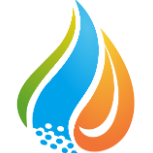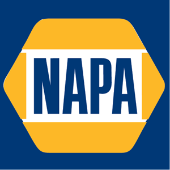-
Welcome to Auto Parts Forum
Whether you are a veteran automotive parts guru or just someone looking for some quick auto parts advice, register today and start a new topic in our forum. Registration is free and you can even sign up with social network platforms such as Facebook, X, and LinkedIn.
Mapping Out the Future of the Global Aftermarket
-
Similar Topics
-
By Counterman
link hidden, please login to view N.A. announced the promotion of Scott Howat to director of sales and marketing. In this new role, Howat will oversee all sales channels across the region, driving strategic growth and market expansion, the company said. Howat joined Litens in 2022, bringing over 30 years of experience in sales, marketing and product management. Most recently, he served as national sales and marketing manager.
“As Litens Aftermarket continues to grow across North America, we are committed to ensuring our leadership team reflects our vision for the future,” said John Lussier, president of
link hidden, please login to view “Scott’s extensive industry experience and strategic approach to sales and marketing make him the ideal leader to drive our continued success and growth.” Over the past two years, Litens Aftermarket said it has experienced significant growth, and this promotion—along with other upcoming leadership changes—is part of the company’s strategic effort to align its internal talent with the areas in which those individuals can deliver the most value. By positioning leaders like Howat in key roles, the company added it is strengthening its aftermarket team and ensuring continued success in an evolving market.
Throughout his career, Howat made a notable impact while working at the Auto Care Association, Affinia Group, Dana, Echlin and Gates Corporation. Howat holds a Master Automotive Aftermarket Professional (MAAP) designation from the University of the Aftermarket. Additionally, he has served in leadership roles with various industry associations, including as a member of the Automotive Communications Council, member of the Auto Care Association Marketing and Communications Committee, and Chairman of the Marketing Executives Council for the Automotive Aftermarket Suppliers Association (now known as the Motor and Equipment Manufacturing Association), among others, according to Litens.
The post
link hidden, please login to view appeared first on link hidden, please login to view.
link hidden, please login to view -
By abiztime
2025 Longkou lihe machinery parts co.,ltd (rdbrake.com) global exhibition schedule.
4.22-26, Sao Paulo. Booth: D275 at AUTOMEC EXHIBITON BRAZIL.
5.21-24.5 at Autopromotec in Italy.
Welcome to visit the booth.
-
By Counterman
WAI Global announced its acquisition of ACI Automotive from Standard Motor Products. According to WAI, this acquisition strengthens
link hidden, please login to view’s product portfolio and enhances its ability to address evolving customer needs with innovative, high-quality solutions. “By integrating ACI’s capabilities, we continue to expand our product offering and strengthen our expertise in managing complex, technical and SKU intensive product lines,” said Ryan Moul, CEO of
link hidden, please login to view. “This acquisition reinforces our commitment to providing differentiated programs that drive value across our expanded portfolio.” Key Highlights of the Acquisition:
Expanded Product Portfolio: The addition of ACI’s washer pump, window regulator, and door handle lines broadens WAI’s offerings. Seamless Customer Transition: Customers can expect uninterrupted service as we ensure a smooth integration process, WAI said. Enhanced Customer Reach: Leveraging WAI’s extensive global distribution network, ACI’s products will now be accessible to a broader audience worldwide. The integration process is already underway, with teams from both organizations working collaboratively to ensure a smooth transition for customers, employees and stakeholders, WAI said.
The post
link hidden, please login to view appeared first on link hidden, please login to view.
link hidden, please login to view -
-
By Counterman
Advance Auto Parts, Inc. presented its 2024 Vendor of the Year Award to Valvoline Global during “Accelerate,” the company’s annual vendor appreciation and leadership kickoff event in Orlando, Florida. This year, the company brought together vendors and team members in one place to fuel “incredible energy” behind executing
link hidden, please login to view three-year strategic plan, while honoring companies that make a positive impact on the business, the company said. “We want to recognize and congratulate vendors like Valvoline that provide the collaboration, partnership and expertise critical for delivering fast, reliable service,” said Bruce Starnes, executive vice president, chief merchant. “We see passion and performance from our vendors every day, which helps drive solutions to better meet the needs of our DIY and professional customers. We thank all our vendors for their contributions to Advance Auto Parts.”
2024 Vendor Partner of the Year: Valvoline Global
Advance said Valvoline is an extraordinary partner, explaining the company plays a role in the launch of new products with exceptional fill rates, delivers innovation in stores for customers, and supports the launch of new systems and processes. Valvoline consistently showcases its belief in collaboration, building strong partnerships, and best-in-class services, according to Advance.
Other Vendor Award Winners and Why they were Chosen:
This is How We Advance Awards: MotoRad, DRiV, and Pulsar
MotoRad, DRiV, and Pulsar provide leading category management services, deliver accurate data, and go above and beyond to provide exemplary service.
Vendor Rep Partner of the Year Award: Josco, Inc.
Josco’s strategic approach enabled Advance to stand up the Carquest Premium Undercar Specialist and Trainer Team.
Excellence in Ecomm Partner of the Year Award: ITW Global Brands
ITW’s proactive collaboration across teams ensures Advance’s customers have the right information to make informed purchase decisions.
Visionary Partner of the Year Award: Wetherill Associates
Wetherill Associates approaches challenges with creativity and collaboration, proactively delivering solutions that align with Advance’s business needs.
Supply Chain Partner of the Year Award: Dorman Products, Inc.
Dorman’s dedication to working across all functions within Advance’s supply chain defined delivery optimization.
Inventory Partner of the Year Award: Highline Warren
Highline Warren’s commitment to drive shared successes paved the way for Advance’s team members to expedite orders fast.
Professional Excellence Champion: Premium Guard
link hidden, please login to view is dedicated to working cross functionally, to produce coverage expansion solutions, and always willing to go the extra mile. DIY Excellence Champion: Chemical Guys
Chemical Guys’ approach to the category through the introduction of bold, innovative items has generated a loyal following among DIY customers.
The post
link hidden, please login to view appeared first on link hidden, please login to view.
link hidden, please login to view
-




Recommended Posts
Join the conversation
You can post now and register later. If you have an account, sign in now to post with your account.
Note: Your post will require moderator approval before it will be visible.